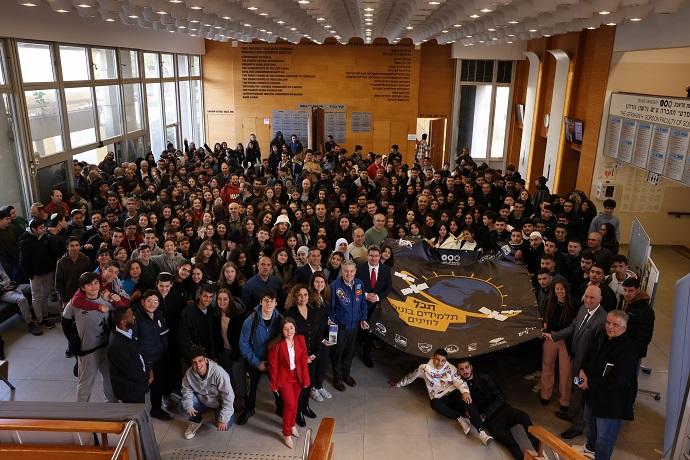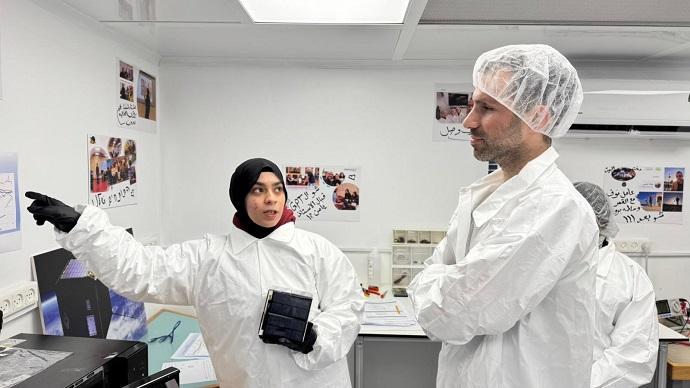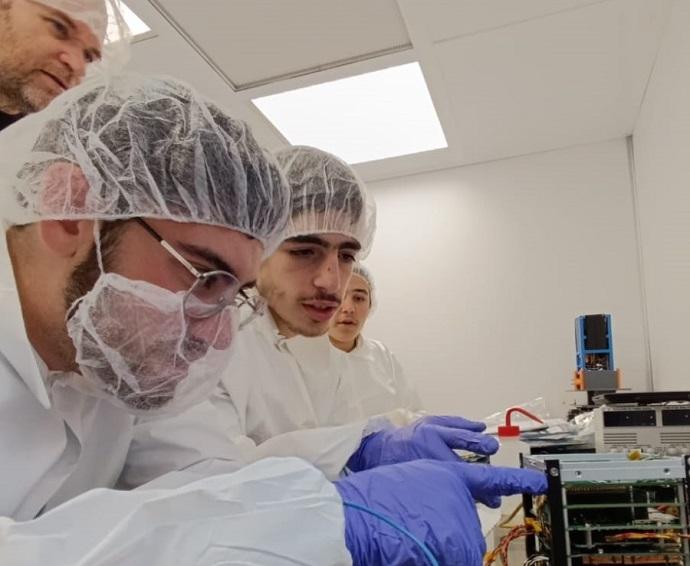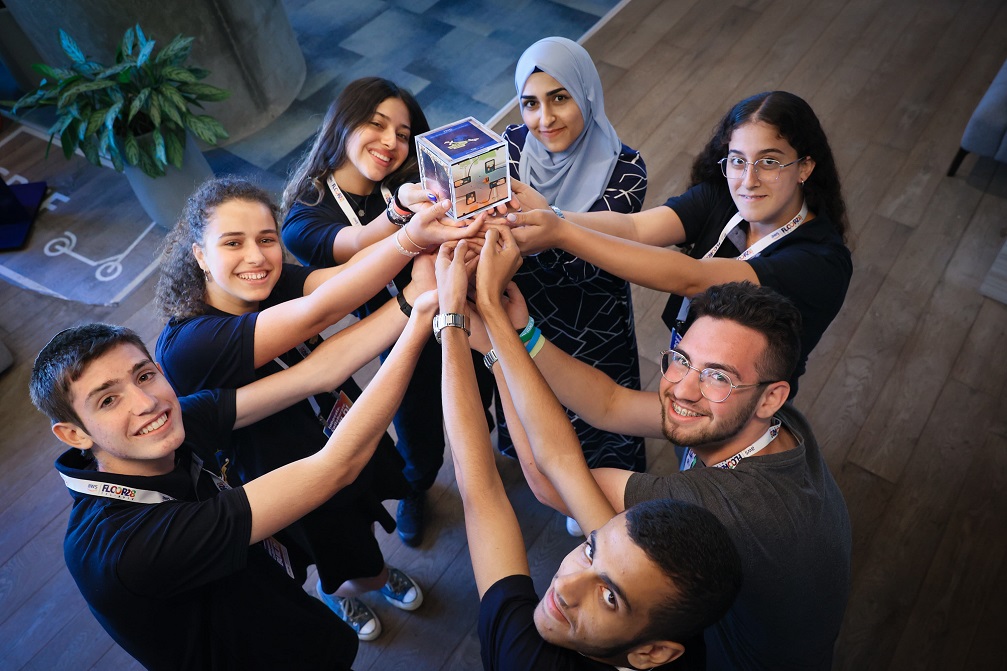Update (March 16th, 2025) A cluster of Tevel 2 satellites was successfully launched into space from the Vandenberg Space Force Base in California. The satellites were launched as a clustered swarm, but over the course of time they are expected to spread out randomly, in orbits around the Earth, and to measure, simultaneously, the cosmic radiation at a height of 500 km.
Israel is about to record an unprecedented achievement in the field of space and science education; on Saturday, March 15th, 2025, at 08:39 (Israel time), nine tiny research satellites will be launched into space from the Vandenberg Space Force Base in California, designed and built by high school students from all over Israel. This is the largest Israeli satellite fleet ever launched into space – an achievement that has not been recorded, so far, by any academic institution or commercial company in Israel.
Watch the live broadcast of the launch:
The swarm of satellites, known as "Tevel 2" (a Hebrew acronym for "Students Building Satellites"), will be launched on a SpaceX Falcon 9 launcher. The satellites will be launched into orbit at an altitude of 500 kilometers and will remain there for about three years. During that time, they will provide vital scientific data and will serve as a source of inspiration for the next generation of Israeli space scientists and engineers.

A Unique Combination of Population Groups
The revolutionary "Tevel 2"project, initiated and funded by the Israel Space Agency at the Ministry of Innovation, Science and Technology, and administered by the Center for Space Engineering at Tel Aviv University, combines scientific innovation with a groundbreaking educational-social vision. At a cost of NIS 10.5 million, the project connects different communities in Israeli society and promotes equal opportunities in scientific-technological education.
The nine satellites, measuring 10 x 10 x 11.3 cm, were built in research and development centers established by Tel Aviv University in nine local authorities throughout the country, with a unique combination of population groups: five from the Jewish sector (Yeruham, Sha'ar Hanegev, Ma'ale Adumim, Givat Shmuel and Herzliya), three from the Arab sector (Ein Mahal, Taybeh and Kafr Qara) and one from the Druze sector (Yarka). It is worth noting that the project also involves the first Druze satellite in history.
The students, who joined the program in the 10th grade and are completing the 12th grade this year, worked in designated clean rooms that were set up in each of the local authorities. In addition, four satellite communication stations were established and were connected to the station at Tel Aviv University – in Herzliya, Yeruham, Givat Shmuel and Sha'ar Hanegev – which will allow students to receive data from the satellites and to command them.


The Scientific Mission and the Mission of Commemoration
The cluster of satellites carries an important scientific mission: measuring cosmic radiation in orbit. "Cosmic radiation is made up of highly energetic particles (mainly protons) that come from our sun, but also as a result of events that occur in the depths of the universe, such as supernovae explosions," explains Prof. Meir Ariel, head of the Center for Space Engineering at Tel Aviv University's Faculty of Engineering. "The flora and fauna on Earth are relatively protected from radiation thanks to the Earth's magnetic field and the atmosphere, but in space this radiation has a dangerous effect on the health of astronauts in spacecraft and on the functioning of satellites’ electronic systems."
Alongside the scientific mission, the Tevel 2 project also carries a commemorative mission. The satellite of the students of Sha'ar Hanegev High School, is called "Ophir", and is named after the late head of the Sha'ar Hanegev Regional High School, Ofir Libstein, who was killed in an exchange of fire with terrorists on Saturday, October 7th, 2023, when he went out to defend the community. The telemetry signal that will be transmitted by the Ophir satellite also contains the names of those murdered and those killed in action from October 7th, 2023, to December 2024. These names will be broadcast randomly and will be picked up by all the media stations.

Continuing the tradition of innovation
The "Tevel 2" project is the successful continuation of a series of Israeli projects in the field, including the Duchifat 1, Duchifat 2, and Duchifat 3 projects, as well as the "Tevel 1" project, which was successfully launched on January 13th, 2022, with the participation of eight schools from eight municipalities.
Minister of Innovation, Science and Technology, Gila Gamliel, said, "The Tevel 2 project symbolizes the pinnacle of Israeli innovation, combined with scientific and technological education. It is a matter of national pride to see high school students from all over the country, from all sectors, leading a global scale groundbreaking space project. The NIS 10.5 million investment in this project is an investment in Israel's scientific and technological future, and in the next generation of Israeli innovation leaders."
Brig. Gen. (res.) Uri Oron, Director of the Israel Space Agency, added, "The Tevel 2 project is a testament to the power of Israeli innovation. We see here a winning combination of scientific excellence, technological education and connection between population groups. These satellites will not only provide vital scientific information but will also be an inspiration to the next generation of Israeli space scientists."











